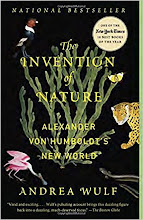The Lunatic Express
Discovering the World... via Its Most Dangerous Buses, Boats, Trains, and Planes
Carl Hoffman
Broadway Books, New York
Last Friday, having spent most of the day plowing through the revisions to my PhD dissertation as suggested by members of my examining committee, I took a break and went to the Starbucks coffee shop in the Murray Library (the main library branch) at the University of Saskatchewan. Charlie gave me a gift card a while ago that I've been refilling every so often for my froofy pseudo-Italian coffee beverage fix; go ahead, call me names because I unironically say the phrase "Grande Latte, please" on a somewhat regular basis. Hey, the uni library isn't as intolerably yuppie / hipster as what I used to do, which was drive my BMW to the Starbucks on trendy Broadway Avenue and order a Grande Latte.
Pictured: BMW, Anachronistic Yuppie-ness. Not pictured: Latte, Starbucks, Fax Machine.
Where was I? Oh, right, in line at the university Starbucks. To take advantage of the captive audience in the queue for caffeine, the staff of the Murray library have (excellently) installed a set of bookshelves near where one stands when the line is particularly long, as it was on Friday afternoon. Onto these shelves they place the newest books the library has just acquired, and a selection of books through the SPL on Campus program. The SPL is the Saskatoon Public Library. Public libraries, unlike university libraries, tend to focus their acquisition efforts (and budget) on books with mass appeal; best-selling novels and popular non-fiction are much more available at a public library than at a typical university library. Obviously, a decent university library will not only also have those best-sellers (in single copies compared to the public library's half-dozen or more per branch) but also access to esoteric academic materials, including broad swathes of the scientific literature and obscure, long-out-of-print materials that never rose to the leve of "classic".
I was feeling a strange need to read for fun to balance the intense proof-reading I'd been doing pretty much all week. This book was standing up in a small metal bookstand on top of the SPL on Campus shelf unit, and I picked it up and started reading while I was standing in line. I made it to page 20 by the time my latte was ready, so I checked it out and took it home.
Mr. Hoffman is an experienced travel writer and it shows in this book. According to the micro-biography in the back, he's a contributing editor to National Geographic Traveller and Wired - and while I like most things National Geographic, Wired has always struck me as pretentious and excessively neophilic. Some parts of this book read a little like a Wired article, with essentially common experiences or not-particularly-interesting events presented as stunning revelations about life, the universe, and everything. Fortunately, such episodes are few and far between.
I enjoyed this book, and this is a Book Club so I won't really review it. I will note that the match between the text and the map at the front of the book is not close - Mr. Hoffman simply does not talk at all about large segments of his journey around the world. I assume the passage from Sao Paulo, Brazil, to Nairobi, Kenya, by way of Johannesburg and Dar es Salaam by air and from Tanzania to Kenya by bus, was not interesting or dangerous enough to describe. This omission is a little strange, like the editor decided this book had to come in under 300 pages (the Appendix - regarding communication with an insurance actuary - starts on page 281) and so cut some of the slightly less hair-raising adventures.
The theme of the latter half (or so) of the book is about loneliness and interpersonal connections. Mr. Hoffman, it emerges in slow parts, is separated from his wife, mainly for reasons of his constant travel and his wanderlust when at home in Washington, DC - at least, according to him. His experiences among the less-than-affluent, especially in South America, Indonesia, and India strike him with a mixture of feelings regarding the Unity of Man and the Need for Connection and other such ennui. I believe him when he describes his own feelings, of course, but it was difficult for me to sympathise. Perhaps if I had also thrown myself into a project that necessarily included episodes where "the very idea of silence was unheard of" (pg 88, Kenya) or if I'd stood "in a line next to roadside stalls, a trillion insects flying and buzzing in the lights, pissing into a trench that had years of plastic water bottles, plastic wrappers, toilet paper"... (pg 203, India) I might be more inclined to identify with his crisis of traveller-mindset and his apparently intense realization that what is missing from his life is strong human contact. Mostly, though, I read about his escapades with the kind of fascinated dread normally associated with graphic depictions of violence.
The book mentions his blog, but all I found was his website - http://carlhoffman.com/ - and his twitter feed - @lunaticcarl - I think I'll follow him, he doesn't tweet very often and when he does there are often pictures. He travels widely and writes clearly and very well, even if (to me) he comes across as a bit emo sometimes.
Wednesday, January 28, 2015
Subscribe to:
Post Comments (Atom)


No comments:
Post a Comment